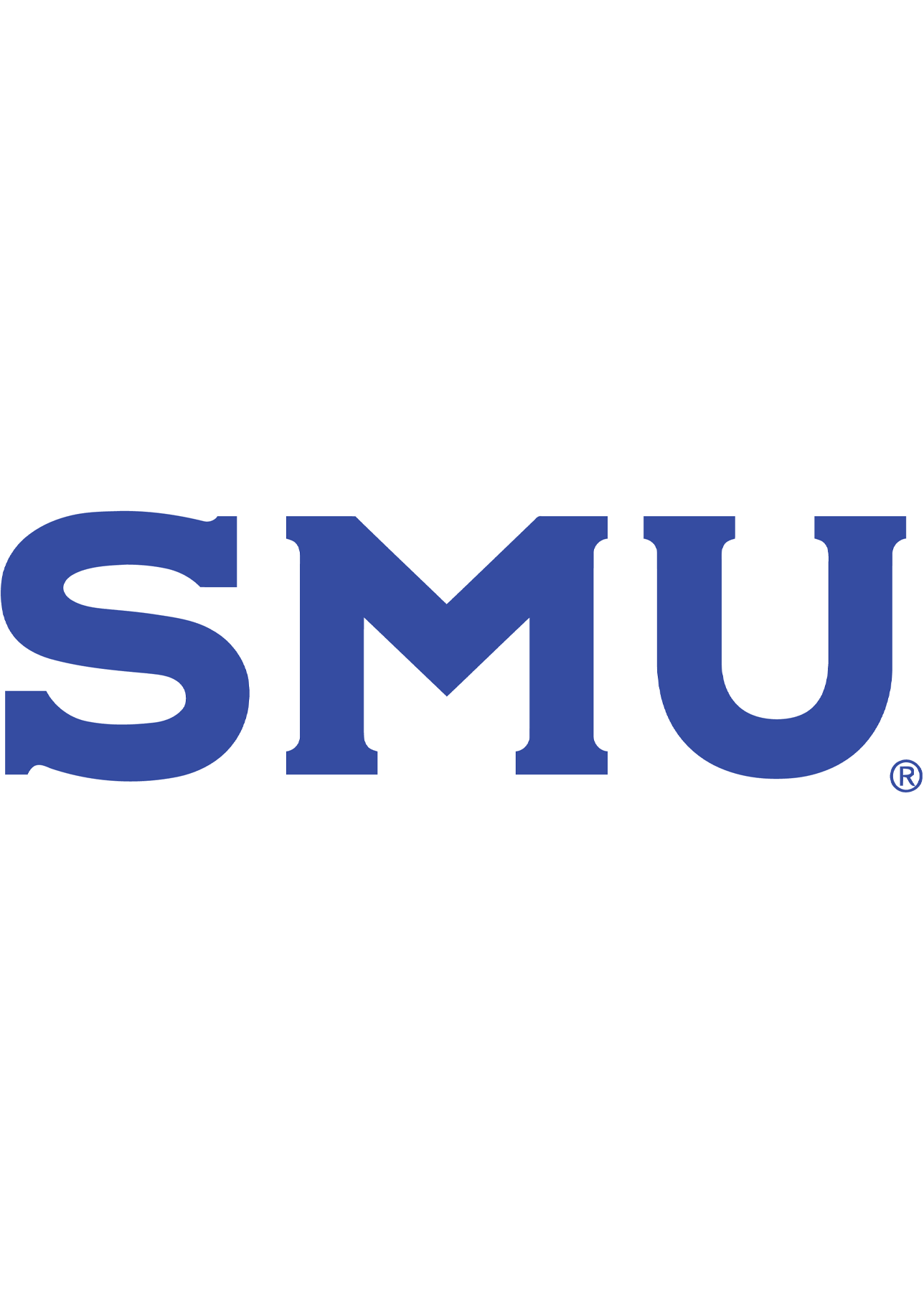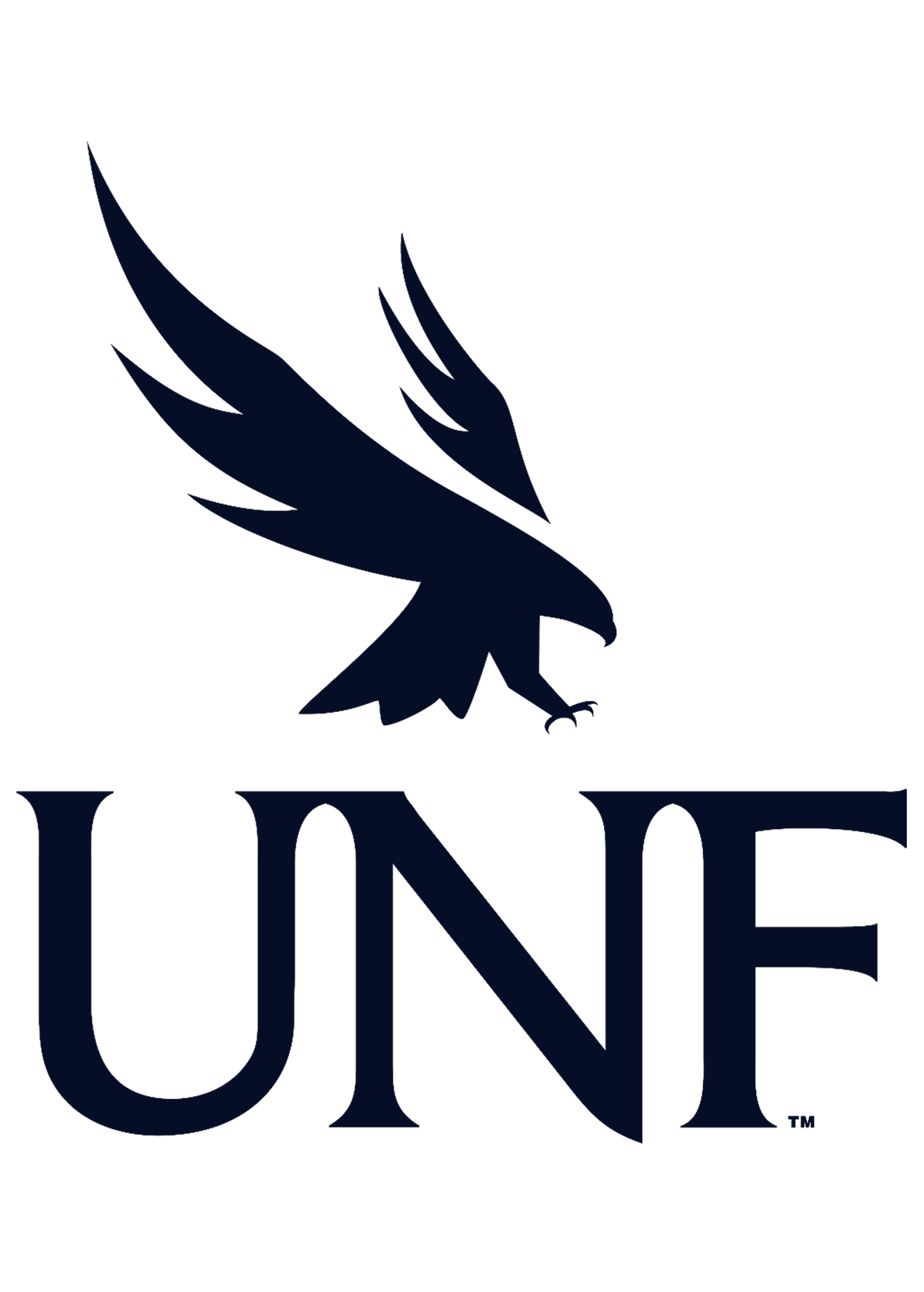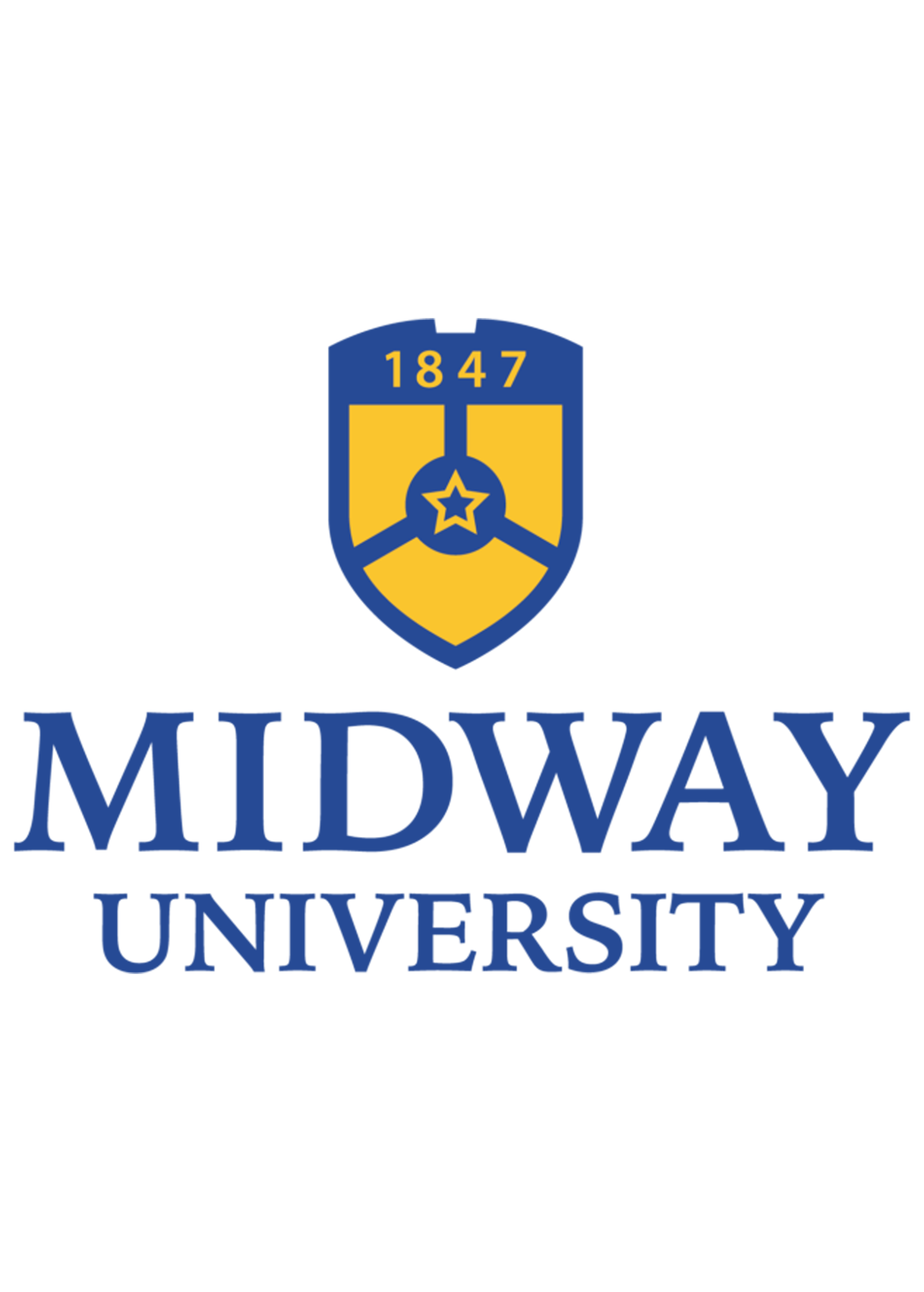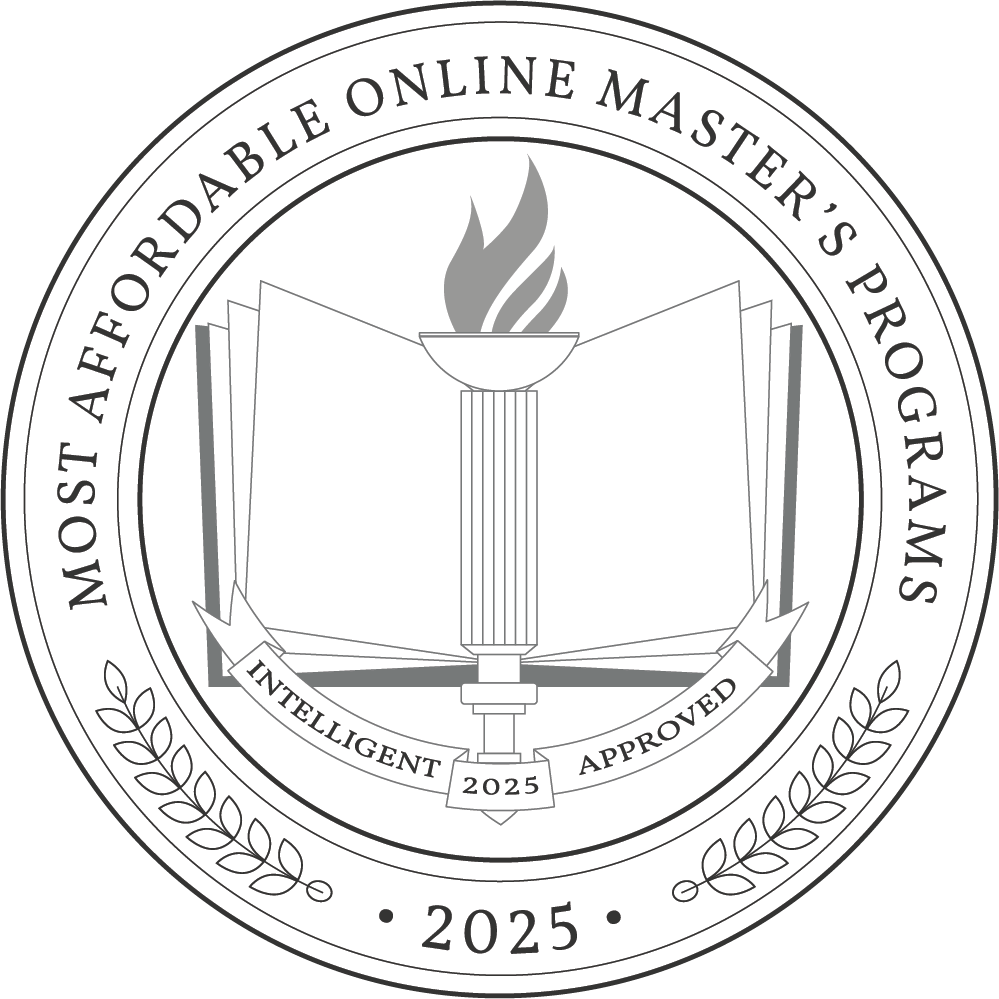For individuals aspiring to higher incomes and lower unemployment rates, the value of an online master’s degree program is increasingly evident. With weekly salaries for master’s degree holders averaging $1,574 and an impressively low 2.6% unemployment rate, earning an advanced degree is generally a wise investment.
Yet, knowing which online program is right for you can be challenging. After all, how can you ensure an affordable program is reputable? What qualities should you seek to determine a top-notch education that aligns with your budget? Which factors should you examine closely to make this decision?
In this article, we’ve compiled a comprehensive list of the most affordable online graduate programs, offering a cost-effective gateway to lucrative career prospects.
We’ll also provide an insightful cost breakdown, dissect the factors influencing tuition rates, and detail various financing options, from out-of-pocket payments to federal loans and work-study opportunities. Plus, we’ll offer tips on selecting the right online master’s degree program to match your career aspirations and financial goals.
Cost Breakdown for an Online Master’s Degree Program
Earning your graduate degree online offers a unique advantage in that it can be completed remotely, anywhere in the world, and at your own pace.
This makes online education feasible for working professionals and those with other significant responsibilities — like raising a family or caretaking — but it does come with its own set of costs. These include the following:
- Tuition: Tuition fees for online master’s programs can vary significantly, but they are typically assessed per credit hour or term. Costs can range from a few hundred dollars to over a thousand dollars per credit, and the total program cost depends on the number of credits required for completion.
- Fees: In addition to tuition, online students may incur fees for various services such as tech support, academic resources, and library access. Sometimes, these fees can add several hundred dollars to the overall cost.
- Personal Technology: To participate effectively in an online program, students need a computer, hardware (often including a webcam and microphone), and reliable Wi-Fi. Costs will depend on the quality and specifications of the equipment you choose.
- Books and Learning Materials: Online students will need textbooks and course materials, which can vary in cost depending on the program’s requirements and whether digital or physical materials are preferred.
Budgeting for these components is essential when choosing an online master’s degree program. Still, it’s also important to remember where you’ll save money by earning your graduate degree in a virtual environment.
Online students often enjoy significant savings compared to their on-campus counterparts by avoiding commuting and housing expenses. This degree of flexibility enables many online students to maintain part- or full-time employment when pursuing their degrees, helping to balance the overall financial impact.
Factors Influencing the Cost of an Online Master’s Degree Program
With an unemployment rate sitting at a mere 2.6% for graduate degree-holders, significantly lower than the national average for other education levels, pursuing your master’s degree online is a wise investment.
However, not all online master’s degree programs are priced the same, and certain factors can cause tuition prices to fluctuate. Here’s a breakdown of the critical factors that impact tuition rates for online institutions:
- Public vs. private institution: Public colleges and universities, often funded by state governments, typically offer the cheapest online master’s degree programs. These institutions receive subsidies, making education more accessible to in-state residents. In contrast, private online institutions are more expensive and rely heavily on tuition revenue.
- Nonprofit vs. for-profit: Nonprofit online institutions prioritize education over profit, resulting in more reasonable tuition rates. For-profit institutions often have higher tuition costs as they aim to generate revenue for shareholders.
- Student residency status: In-state residents usually benefit from significantly lower tuition rates at public institutions. Out-of-state and international online students pay higher rates, as they don’t contribute to the state’s tax base that supports the university.
- Student military status: Active-duty military personnel and veterans may receive tuition discounts, scholarships, or access to government-funded programs like the GI Bill, making education more affordable for this group of online learners.
Why Trust Us
The Intelligent.com Higher Education Team is dedicated to providing students with independent, equitable school and program rankings and well-researched resources. Our expert-driven articles cover topics related to online colleges and programs, paying for school, and career outlooks. We use data from the U.S. Department of Education’s College Scorecard, the National Center for Education Statistics, and other reputable educational and professional organizations. Our academic advisory team reviews content and verifies accuracy throughout the year for the most current information. Partnerships do not influence rankings or editorial decisions.
- Analyzed over 2,000 national, accredited, and nonprofit colleges and universities
- 800+ rankings pages are reviewed and updated yearly
- Content is informed by reputable sources, surveys, and interviews with academic advisors and other experts
- Over 100 data points are reviewed for accuracy and quality throughout the year, including sources
How we rank schools
Our list features the most affordable online Master’s degree programs at top colleges nationwide. Each school featured is a nonprofit, accredited institution — either public or private — with a high standard of academic quality for post-secondary institutions.
We evaluated each school’s program on tuition costs, admission, retention and graduation rates, faculty, reputation, and the student resources provided for online students. We collected data from trusted sources like the National Center for Education Statistics, individual school and program websites, school admissions counselors, and other data sources. Then, we calculated the Intelligent Score on a scale of 0 to 100 based on the following criterion:
Academic Quality:
- Admission rate versus enrollment rate
- Retention rate of students who return after year one
- Accreditation status (regional and programmatic)
- Nonprofit status, both private and public institutions
Graduation Rate
- Overall graduation rate
- Total number of currently enrolled students, including diversity metrics
- Student-to-faculty ratio
Cost and ROI
- In-state and out-of-state per-credit tuition rates and fees
- Required credits to graduate
- Earning potential after graduation
- Availability of federal student loans, scholarships, and other financial aid options
Student Resources
- Available student services for online-only and hybrid programs
- On-campus amenities like tutoring centers and the number of libraries
Read more about our ranking methodology.
Most Affordable 47 Online Master’s Degree Programs
FiltersInstitution Type
Status
- Intelligent Score
- Alphabetically By University Name
- Acceptance Rate
- Enrollment
- In-state Graduate Tuition
- Out-of-state Graduate Tuition
- In-state Undergraduate Tuition
- Out-of-state Undergraduate Tuition

The University of Texas Rio Grande Valley
Intelligent Score: 99.31In-state: $11,448
Out-of-state: $40,032
In-state: $12,028
Out-of-state: $12,028
SAT: 1210-1470
ACT: 26-33
We ranked University of Texas - Rio Grande Valley at the top based on its affordable online master's programs, as well as its variety and high quality. Eligible students may get financial assistance through UTRGV's Tuition Advantage grant, which helps students who come from households with an annual income of less than $125,000 close any gaps in their financial aid. UTRGV is particularly affordable for Texas residents, with graduate tuition capped at $5,457 per term for the 2022-23 academic year. Students can choose from online programs in in-demand areas of study like nursing, Spanish translation, interpreting, education, business, and more.
$444 - $472
Online
Southern Association of Colleges and Schools Commission on Colleges
30-36

University of Florida
Intelligent Score: 99.28In-state: $4,477
Out-of-state: $25,694
In-state: $10,770
Out-of-state: $10,770
SAT: 1290-1460
ACT: 29-33
$449 - $865
Online
Southern Association of Colleges and Schools Commission on Colleges
30-52

Stanford University
Intelligent Score: 96.96In-state: $55,473
Out-of-state: $55,473
In-state: $54,315
Out-of-state: $54,315
SAT: 1420-1570
ACT: 31-35
Students seeking an online degree from a prestigious research institution may want to take a closer look at Stanford University's online master's programs in popular STEM fields like engineering, biomedical informatics, computer science, and more. Graduate tuition at Stanford University is $1400 per credit hour. Before committing to the full cost of a program, students can test-drive Stanford's online experience with the university's collection of hundreds of free online courses. For those who decide to enroll, Stanford's Financial Aid Office helps students find funding through scholarships, grants, and need-based aid. They also have support programs for students who find themselves in need of emergency aid.
$339 - $378
Online
Western Association of Schools and Colleges Senior College and University Commission
30-60

Fort Hays State University
Intelligent Score: 96.39In-state: $4,140
Out-of-state: $14,580
In-state: $3,726
Out-of-state: $3,726
SAT: N/A
ACT: N/A
Depending on the program, graduate tuition at Fort Hays State University ranges from $298 to $400 per credit hour, making them a highly affordable option for graduate school. FHSU helps students find the resources they need to pay for their master's degrees with financial aid workshops, checklists, and scholarship programs. For students seeking an advanced online degree in an arts- or humanities-related field, FHSU offers multiple options, including master's degrees in English and literary arts, music composition, art history, and more. These programs allow students to deepen their knowledge, develop critical thinking skills, and prepare for a variety of career opportunities through the convenience of online learning.
$338-$374
Online
Higher Learning Commission
30-36

Duke University
Intelligent Score: 96.16In-state: $55,880
Out-of-state: $55,880
In-state: $57,900
Out-of-state: $57,900
SAT: 1470-1570
ACT: 34-35
$2,166 - $3,780
Online
Southern Association of Colleges and Schools Commission on Colleges
30-49

North Carolina State University
Intelligent Score: 94.99In-state: $6,535
Out-of-state: $26,654
In-state: $9,095
Out-of-state: $9,095
SAT: 1230-1410
ACT: 27-32
Resident: $546
Non-Resident: $1,700
Online
Southern Association of Colleges and Schools Commission on Colleges
30-60

The University of Texas Permian Basin
Intelligent Score: 94.5In-state: $11,448
Out-of-state: $40,032
In-state: $12,028
Out-of-state: $12,028
SAT: 1210-1470
ACT: 26-33
$275
Online
Southern Association of Colleges and Schools Commission on Colleges
30-65

Wayne State College
Intelligent Score: 93.55In-state: $5,580
Out-of-state: $11,160
In-state: $4,185
Out-of-state: $4,185
SAT: N/A
ACT: N/A
$378 - $400
Online
Higher Learning Commission
30-60

Southeast Missouri State University
Intelligent Score: 92.37In-state: $6,779
Out-of-state: $12,951
In-state: $5,373
Out-of-state: $5,373
SAT: N/A
ACT: N/A
$383
Online
Higher Learning Commission
30-42

Southern Methodist University
Intelligent Score: 92.15In-state: $51,958
Out-of-state: $51,958
In-state: $40,896
Out-of-state: $40,896
SAT: 1250-1450
ACT: 29-33
$675-$1,704
Online
Southern Association of Colleges and Schools Commission on Colleges
30-52

Purdue University
Intelligent Score: 91.98In-state: $9,208
Out-of-state: $28,010
In-state: $9,208
Out-of-state: $9,208
SAT: 1170-1420
ACT: 25-33
Resident: $425 - $1,250
Non-Resident: $450 - $1,459
Online
Higher Learning Commission
30-57

University of North Florida
Intelligent Score: 91.98In-state: $3,996
Out-of-state: $16,799
In-state: $8,570
Out-of-state: $8,570
SAT: 1040-1230
ACT: 20-27
$275 - $408
Online
Southern Association of Colleges and Schools Commission on Colleges
30-48

Georgia Tech
Intelligent Score: 91.81In-state: $28,106
Out-of-state: $49,218
In-state: $27,898
Out-of-state: $27,898
SAT: 1370-1530
ACT: 31-35
Resident: $601 -$1,261
Non-Resident: $1,276 - $1,976
Online
Southern Association of Colleges and Schools Commission on Colleges
30-36

Lamar University
Intelligent Score: 91.07In-state: $6,129
Out-of-state: $15,945
In-state: $6,397
Out-of-state: $6,397
SAT: 943-1140
ACT: 17-23
$342 - $439
Online
Southern Association of Colleges and Schools Commission on Colleges
30-61

Wilmington University
Intelligent Score: 89.61In-state: $11,430
Out-of-state: $11,430
In-state: $8,784
Out-of-state: $8,784
SAT: N/A
ACT: N/A
$537
Online
Middle States Commission on Higher Education
30-55

Midway University
Intelligent Score: 89.4In-state: $24,500
Out-of-state: $24,500
In-state: $6,240
Out-of-state: $6,240
SAT: 990-1170
ACT: 18-24
$295 - $485
Online
Southern Association of Colleges and Schools Commission on Colleges
30-60

Texas A&M International University
Intelligent Score: 89.09In-state: $8,395
Out-of-state: $36,849
In-state: $6,775
Out-of-state: $6,775
SAT: 1160-1380
ACT: 26-32
Resident: $77
Non-Resident: $487
Online
Southern Association of Colleges and Schools Commission on Colleges
30-54

Arizona State University
Intelligent Score: 88.65In-state: $10,710
Out-of-state: $28,800
In-state: $11,720
Out-of-state: $11,720
SAT: 1100-1320
ACT: 21-28
$576
Online
Higher Learning Commission
30-60
How to Choose the Online College or University that’s Right for You
Step 1: Clarify what you want
Deciding to seek higher education is an excellent way to take your career to the next level or pivot to a new field, and the path to success starts with gaining clarity on several crucial factors before committing to an online master’s program.
First, determine your area of study. While this decision may be relatively straightforward for those planning to stay in their current field, it may require more thought from those seeking a new career. After all, a master’s degree in accounting will prepare you for a vastly different future than a master’s degree in psychology, computer science, criminal justice, or any other field.
Next, consider the program type: a traditional master’s degree program, executive program, or specialized track. Assess the program’s delivery format and schedule to ensure it fits your lifestyle. Addressing these vital components will prepare you for a more rewarding and tailored education journey.
Step 2: Research schools and programs
Once you’ve clarified your educational goals, it’s time to research schools and programs that are well-equipped to help you achieve those objectives. First, check for institutional and programmatic accreditation to ensure you’re eligible for federal funding.
Then, consider the following questions to help guide your research:
- Does the online master’s program align with your career objectives?
- What is the curriculum structure, including core and elective courses?
- Is the faculty experienced in online teaching?
- Are there opportunities for networking and student support services?
- Are there hybrid programs available that allow online students to take some classes on campus?
- How affordable is the school compared to your other options?
You can gather this information by exploring school websites, attending virtual or in-person open houses, contacting program coordinators, speaking with current students, and examining program reviews and rankings.
Step 3: Prepare for applications and tests
Now that you have shortlisted your preferred online graduate programs, you can begin preparing for the application process. Ensure you meet all application requirements, including transcripts, letters of recommendation, essays, and a resume.
If your selected programs require Graduate Record Examinations (GRE) or Graduate Management Admission Test (GMAT) scores, consider enrolling in a test prep program to improve your scores. A strong test score can boost your competitiveness as an applicant, and test prep programs for both the GRE and the GMAT can help get you there with test-taking strategies and structured study plans.
Step 4: Select your program
Two strategies exist when applying to online graduate schools: a focused approach that prioritizes one or two ideal schools and a broader approach that casts a wider net for increased acceptance chances. Each has its merits, depending on your priorities.
For those with multiple acceptance letters, deciding on which online master’s program you will attend requires thoughtful consideration. Now is an excellent time to revisit factors like program fit, faculty expertise, financial aid, and career prospects post-graduation. You can also seek insights from current students, attend program webinars, and evaluate each program’s curriculum and support services.
Step 5: Determine how you’ll pay for your degree
Paying for your online master’s degree can feel intimidating, but it doesn’t have to be.
Prioritize scholarships and grants, as they don’t require repayment and can significantly offset expenses. Federal loans should be your next choice due to their lower interest rates and flexible repayment terms compared to private loans. Additionally, explore work-study options, as these opportunities will help you secure employment while completing your online master’s program.
By strategically combining these financial resources, graduate students can make their educational investment more accessible and financially manageable.
How to Pay for an Online Master’s Degree
Out-of-pocket
For some online students, paying for their tuition out-of-pocket is a money-saving endeavor that can benefit them for years to come. Students can use their personal savings to avoid costly student loans with interest rates if available.
Many online master’s degree programs also provide flexible payment plans that allow students to break their total tuition into manageable installments, making higher education financially feasible.
Federal student loans
Federal student loans are another option to finance your online degree and are generally more favorable than private education loans. Federal loans offer flexible repayment terms and typically come with lower interest rates.
Graduate students commonly receive two types of loans after submitting the Free Application for Federal Student Aid (FAFSA): Direct Unsubsidized Loans and Direct PLUS Loans.
While federal student loans provide accessible and cost-effective financing options, avoiding overborrowing and pursuing other financial aid is essential to avoid incurring significant debt.
Private education loans
While private education loans are an option to fund your education, they should generally be used as a last resort. These loans often come with high interest rates and inflexible repayment terms, making them a costly choice compared to federal loans or personal savings.
It’s advisable to exhaust all other financial aid options before considering private loans, as they can lead to significant debt burdens and financial strain after graduation.
Scholarships
Scholarships are an excellent option to offset the cost of your online education. Scholarships are often awarded for various reasons, including merit-based, need-based, and subject-specific opportunities. These opportunities are available from multiple sources, including universities, private organizations, and government entities.
Explore your chosen institution’s scholarship programs to find scholarships for your studies. The financial aid office of your graduate school can connect you with opportunities ideal for your background and needs.
Grants
You can also leverage grants as a source of financial aid for your education. Grants, like scholarships, do not require repayment but differ in their origin; grants are often government-funded, while scholarships come from various organizations and institutions.
Graduate students are not eligible for federal grants like the Pell Grant, as it’s predominantly awarded to undergraduates. However, the Teacher Education Assistance for College and Higher Education (TEACH) Grant is available for qualifying graduate students and grants up to $4,000 annually. State-specific and institutional grants might also be an option, depending on your chosen online master’s program and location.
Work-study
Work-study programs can help graduate students fund their online education with part-time employment opportunities that align with their field of study. While work-study opportunities are often awarded based on financial need, graduate-level positions for online learners might involve virtual research, teaching assistantships, or administrative roles.
These programs allow students to gain practical experience and earn money to cover educational costs. Even better, work-study options for online graduate students are designed to be flexible, accommodating your study schedule while providing valuable skills and financial support.
Employer tuition assistance
Those currently employed can explore employer tuition assistance, a valuable benefit where employers partially or fully cover educational expenses. This support not only eases the financial burden but also supports career development.
To discover if your employer offers this benefit, contact your HR department. Some employers may require students to pursue degrees related to their current roles, while others have more flexible policies.
Applying for Financial Aid
The Free Application for Federal Student Aid (FAFSA) process for graduate students involves a few key steps.
First, you must create an FSA ID and gather your financial documents, including tax returns and bank statements. Next, complete the FAFSA form online, providing personal and financial information. Then, specify the graduate schools you are planning to apply to. After submission, review your Student Aid Report (SAR) for accuracy.
The SAR will then be sent to your chosen schools to determine your eligibility for federal financial aid programs, including grants and loans. Be sure to adhere to deadlines and keep your information up-to-date for a smooth financial aid process.
Learn more about the FAFSA
For those seeking a comprehensive resource on navigating the FAFSA, check out Intelligent.com’s Ultimate FAFSA Guide.
This guide offers invaluable insights into the types of funding available, a step-by-step how-to list for completing the form, and tips on handling questions related to family size and immigration status.
Student loan forgiveness and repayment
Amid ongoing debates and legislative efforts surrounding student loan forgiveness in the United States, current and prospective college students must consider their financial future responsibly. Making a well-informed plan for loan repayment is essential to ensure financial stability after graduation.
College counselor Dana Marvin emphasizes this significance: “First, take out what you need and nothing more.” She continues, “For example, if you’re eligible to take out a loan for $12,500 per year but only need $8,000, there’s no need to take out a loan for that extra funds. Remember, every dollar you take out in a loan will not only be paid back, but with interest!” While federal loans can be helpful, it’s essential to avoid overborrowing to set yourself up for financial success in the future.
Frequently Asked Questions: Affordable Online Master’s Degrees
What are the cheapest accredited online master’s programs in the U.S.?
According to our research, Midway University in Midway, Kentucky, is the most affordable private non-profit institution for master’s degrees, with per-credit tuition rates ranging from $295 to $485.
Among public universities, Texas A&M International University, based in Laredo, Texas, has the lowest in-state tuition rate, at $77 per credit hour. Meanwhile, the lowest out-of-state tuition rate for a public college can be found at Purdue University, based in West Lafayette, Indiana, where tuition for non-resident students starts at $450 per credit hour.
However, students should be mindful that several factors determine how much a master’s degree program costs overall. Because tuition is assessed on a per-credit basis, students must multiply their per-credit tuition rate by the total number of credits required by the program to determine the total cost of the program. A master’s program with a cheaper per-credit tuition rate but requires more credit hours may actually be more expensive than a program with a higher tuition rate with fewer total credits.
It’s also important to factor in financial aid when determining which program costs the least. Even if a program has a higher sticker price, gift aid like scholarships, grants, and fellowships can significantly reduce costs and make programs more affordable.
For the most accurate information about which online master’s degree program will be most affordable for you, contact the school’s financial aid office to speak to a financial aid counselor.
Can I get financial aid for low-cost online master’s programs?
To determine eligibility for most forms of financial aid, students must submit the Free Application for Federal Student Aid (FAFSA). Schools use the information from this application to determine how much financial aid students can receive in the form of need-based scholarships, grants, work-study funding, assistantships, and federal student loans.
Students in low-cost online master’s programs can also apply for merit-based aid, such as scholarships for academic achievement, extracurricular activities or professional development or fellowships to support their academic endeavors or research.
Do cheap online master’s degrees provide career opportunities?
Earning an online master’s degree can help individuals prepare for career opportunities by deepening their level of expertise in their chosen field, learning new skills they can apply to advanced roles, or making them eligible for the professional credentials necessary for certain positions.
For example, to become a licensed clinical social worker (LCSW), individuals must have a Master of Social Work (MSW). Once students complete this degree and obtain their social work license, they will have a wider range of opportunities for clinical social work jobs in hospitals, in-patient and outpatient treatment facilities, private practices, and more. Similarly, a master’s degree is required to advance from being a registered nurse to a nurse practitioner, or from a classroom teacher to a principal or school administrator.
What is the average cost of the cheapest online master’s degree?
The cost of an online master’s degree varies based on the total number of credits a program requires, the school’s status as a public or private institution, and whether a student is considered in-state or out-of-state at a public college.
Among the schools on our list, the average per-credit tuition rate at private non-profit colleges is $1041. Private colleges charge all students the same tuition rate, regardless of where they reside, because they don’t receive government funding to subsidize their operations.
Because public universities do use state taxpayer dollars to fund operations, they charge in-state students lower per-credit tuition rates. The average in-state tuition rate for the public colleges on our list is $510 per credit hour, while the average out-of-state tuition rate at these schools is $1018 per credit hour.
How long does it take to complete an affordable online master’s degree?
The time it takes to complete an online master’s degree depends on the total number of credits the program requires and the pace at which a student progresses through the program.
Most master’s degrees require between 36-60 total credits. Programs that require fewer credits can typically be completed in 1-2 academic years for full-time students, while those that require more credits usually take 2-3 years of full-time study. Enrolling in a master’s degree program on a part-time basis may mean students take additional time to complete their degree, as they are taking fewer credits each term.
Students who want to earn their master’s degree faster can explore accelerated degree programs, which condense credit loads into a shorter time frame.


